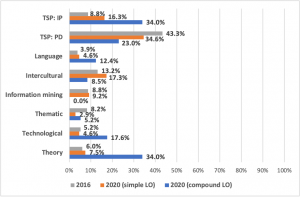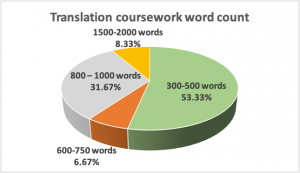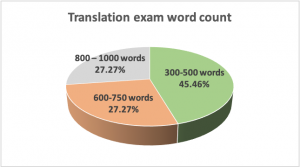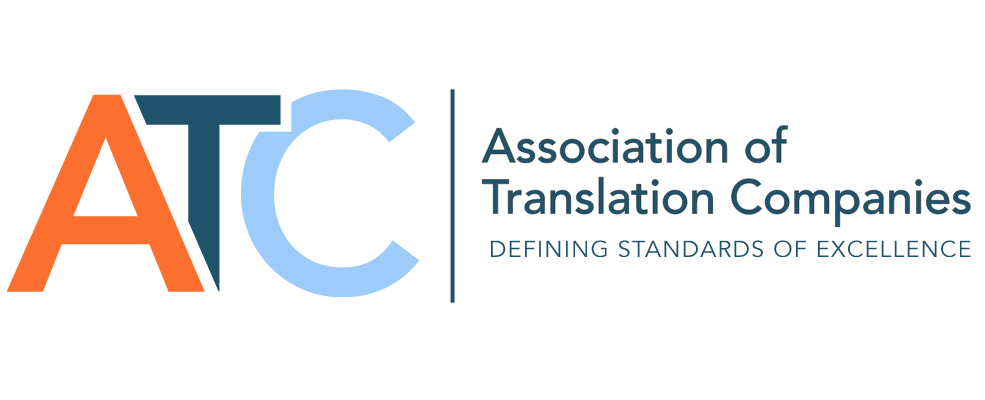In an industry undergoing huge disruption and transformation, it’s important that, as your trade association,…
Elsa Huertas Barros and Juliet Vine, University of Westminster
New employees and new freelancers you work with will for the most part be the product of university courses in translation, usually master’s programmes. But what do these university courses offer their students? What do universities see as their main mission in providing training for translators and are they fully preparing graduates for employment in the real world?
These are some of the questions we have sought to answer in a survey carried out this year. The researchers received extensive data from over two thirds of all universities offering MAs in translation in the UK and Ireland. They used the data on the stated learning outcomes and the assessment practices of the MA programmes’ main language specific translation modules to reveal the priorities and the assumptions underlying these modules. This survey is a follow up survey on one carried out in 2016 and, as such, the results can also reveal trends within the courses.
Background information
This year we have been surveying UK and Irish universities who offer MAs in Translation / Translation and Interpreting. This is a follow up survey to the one we carried out in 2016. The focus of our survey has been assessment practices on the core translation modules. In 2016, we were particularly interested in exploring the perceived gap between what universities were teaching and assessing and what the language service providers felt needed to be addressed in training translators. In 2020 we wanted to see if there were changes in translation training programmes aims and objectives and how these are realised in the assessment patterns.
A total of 30 universities out of the 40 we contacted that offer MAs in Translation / Translation and Interpreting participated in the survey and we collected information on a total of 59 language specific practical translation modules offered on MA translation programmes with a focus on translation.
All university courses and individual modules on the courses need to provide a set of learning objectives (LO). As such, these LOs are a useful indicator of what universities think are important aspects of their training and, from the languages industry perspective, they can shed light on the issue of the gap between translation standards at university and those required by industry.
We analysed the LOs by comparing them to the European Masters in Translation competence framework (EMT, 2009). The EMT framework was devised by an expert group of academics from across Europe in conjunction with the European Commission’s DGT. The framework provides a list of competences which the expert group believed were necessary for a professional translator. By comparing the LOs on the core translation modules with the EMT framework, we wanted to assess to what extent MA programmes aims and objectives in training translators reflected those competences required of professional translators.
In order to make valid comparisons with our first survey results and to see, if and to what extent, the LOs have changed in the last 4 years, we used the EMT 2009, rather than the revised EMT competence framework (2017). The 2009 framework from an analysis point of view has the added benefit of clearly distinguishing between competences which are frequently found in the LOs, whereas the 2017 framework has amalgamated several competences to create a super ‘translation’ competence, which does not allow for more granular analysis.
The seven EMT 2009 competences can be summarised as follows:

Chart 1. EMT competence framework (EMT, 2009)
There were two approaches to creating a list of LOs. Most universities (25 of the 30 respondents) provided an undifferentiated list of on average 6 LOs per module which cover all forms of knowledge, skills and aptitude. The number of LOs is usually institutionally restricted, so these LOs are carefully chosen not to be exhaustive, but rather reflective of major aims. However, five of the 30 respondents did not follow this pattern and produced LOs which were divided into different dimensions such as: a) Knowledge and mastery and b) personal abilities. Another university gave categories which included key skills and practical professional skills. These five universities had a much larger number of LOs, averaging 19.1 per module and were thus able to cover a wider range of LOs. We term the first approach ‘simple LOs’ and the second ‘compound LOs’.
In the 2016 survey, the respondents gave standard simple LOs and so the simple LOs of 2020 were used as a comparison. The additional five universities will be discussed separately.

Chart 2. Breakdown of LO on language specific translation modules
The alignment of the LOs with the competences remains very similar in both surveys. This indicates that the universities have not significantly changed the objectives in terms of teaching the core translation skills. This is particularly surprising in terms of the technological competence. Even though many MA courses provide a separate specialist CAT tools module, we would have expected more universities to be embedding CAT and other technological skills in the main translation modules.
The Translation Service Provision (TSP) remains the overwhelming most common LO of core translation modules, accounting for 50.9% of all simple LOs in the 2020 survey compared to 52.1% in 2016. Given that TSP is the key translation competence in the framework (one that is interrelated to all the other competences), this finding is not surprising, but rather confirms that the modules all have a similar focus on this key competence.
However, when the TSP is divided into its two component parts, there is a shift in focus from the TSP Product dimension (PD) to TSP Interpersonal and Personal dimension (IP) in the findings of the two surveys. This indicates that universities are widening the scope of the learning objectives to include a greater emphasis professional practice and ethics, as well as the transferrable skills related to any profession such as working to deadlines and negotiating with clients.
In the recent survey, when the compound LOs are analysed i.e. the longer list of LOs differentiated into several dimensions, the TSP competence is also found to be the most prominent category of LOs. However, whereas the simple LOs were divided in TSP IP (16.3%) and TSP PD (34.6%), the compound LOs were divided TSP IP (34%) and TSP PD (23%). When universities were not constrained in the number of LOs and when the LOs express a wider range of dimensions, it is interesting that translator professionalism and transferrable skills such as teamwork and project management become much more prominent as LOs.
In both the 2016 and 2020 surveys, after TSP competence, the next most commonly expressed LO relates to the translator’s role as an intercultural mediator and in particular being able to identify and respond to differences in the sociolinguistic conventions of the two language-using communities. Not only was the intercultural competence prominent in the number of times it was mentioned (2016 -> 13.2% of LOs and 2020 -> 17.2%), but this competence occurred as the first LO to be mentioned in 29% of the modules which gave simple LOs. This was nearly equivalent of the simple LOs mentioning TSP first in their list (35%).
Main findings on assessment instruments and tasks
- In the majority (over 70%) of the language specific translation modules for which respondents provided the information, students translate into and out of mother tongue. While the principle in translation industry is that translators translate into their mother tongue, translator training at university focuses on both directions as a pedagogical tool to strengthen and hone students’ translation competence.
- In terms of type of assessment instruments, coursework (CW) is more widely used than exams on language specific translation modules, with nearly 84% of the assessment tasks being CW and just over 16% being an exam. In this context, the term CW includes translations and CW consisting of other tasks. The term exam is defined as a translation completed under time constrains (i.e. within 24 hrs). This category includes translation exams and exams consisting of other tasks.
- These results show a marked decrease in the number of modules which are now assessed using exams. In 2016, 62.4% of all assessments involved exams either in conjunction with CW (58.3%) or as a sole form of assessment (4.1%). Whereas in 2020 only 16.6% of assessment patterns contained exams. Over 40% of the respondents agreed with the statement that exams were not representative of ‘translation work done by a professional’, whereas only 24% of respondents thought ‘exams are representative of real-world practice’.
- A shift away from exams reflects an underlying trend to assess not only the product i.e. the translation but also the processes. This shift can also be seen in chart 4, where there has been an increase in the percentage of coursework which involves tasks other than translation. In 2015/2016, only 33% of assessment tasks were non-translation tasks, and this has increased to 40% in 2019/2020.


Chart 1 and 2. Type of assessment instruments used on language specific translation modules (academic year 2019/2020)
Types of assessment tasks
- As in the 2016 survey, ‘traditional’ translation CW is still the predominant form of assessment used on the language specific translation modules to date (over 78%). See chart 3.
- Only a small percentage of the translation coursework (2.38%) involves translation projects i.e. longer individual or group translations often designed to stimulate the professional workflow of project managers, translators, revisors, proofreaders, clients, etc.
- Compared to 2016, there has been an increase in the percentage of assessment tasks which focus on the different aspects of the translation workflow (e.g. glossary, termbase, post-translation analysis, post-editing tasks, invoices, professional engagement report).
- However, the increase in these types of tasks is relatively modest comprising only 13% of the total of non-translation tasks. By far, the most common non-translation tasks were commentaries/ annotations (i.e. critical analysis of the translation process and justification of translation strategies), reflective reports and essays (comprising 73% of the total of non-translation tasks. The range of tasks can be seen in chart 4 below.
- These reflective tasks require students to demonstrate self-assessment and awareness of their role as professional translators.
- Although, as noted above, there has been an increase in the number of non-translation tasks which are being assessed, given the increasing influence of the EMT competence framework and its concomitant bench marking activities, it is interesting that there has not been a more significant increase in these alternative assessments as part of the main translation modules.
- This is most striking in terms of the number of translation modules which have embedded CAT as part of the translation assessment. With the rapid increase and advances in translation technology and the prominence given to technology in the 2017 EMT competence framework, it is surprising to find that only 3.6% of translation CW on the main translation modules is carried out with CAT tools an only 1.3% of CW explicitly mentions post-editing.
- This lack of assessment involving CAT is also surprising given that 43% of the participants stated that changes in assessment practices in the last 5 years have been implemented in response to changes in professional practice.
- It is worth pointing out that many of the responding universities are offering separate translation technology modules, but have as yet not embedded this training into the main translation modules.

Chart 3. Breakdown of coursework involving translations

Chart 4. Breakdown of coursework involving other tasks
Word count & time frame allocated to translations
- The most common word count for both translation CW and exams is 300-500 words. This word count is used in 53% of CW and 46% of exams.
- The most common time allowance for completing the 350-500-word CW is between 4-7 days and two hours for the 350-500-word exam.
- The second most common word count is 800-1000 words (used in 32% of CW and 27% of exams), followed by 650-750 words (used in 27% of exams).

Chart 5. Breakdown of translation coursework word count

Chart 6. Breakdown of translation exam word count
- Some of the higher translation CW word counts seem to correspond with the shorter turnaround time frame (between 600-1000 words to be translated in 48-72 hours). In most cases, these are take-home tests which try to replicate exam time constrains.
- In most cases, students are expected to translate an average of 200-250 words per hour in translation exams. This mirrors professional practice with junior translators usually being able to translate approximately 1500 words per day and more seasoned translators usually translating an average of 1800-2200 words per day (8 hrs).
- As expected, translation projects usually have a higher word count (approximately 1500 words), than traditional translation CW, as do translation portfolios (i.e. a selection of translations) which usually range between 1500-5500 words.
- The findings of the 2016 survey showed that the total word count for all the pieces of translation CW on the main translation modules was rarely more than 2500 words. This is also the case for most assessment patterns in the 2020 survey. However, the increase in the use of translation portfolios means that in these cases the total word count can be considerably higher.



